7 Classic Cartoons That Are Offensive by Today’s Standards
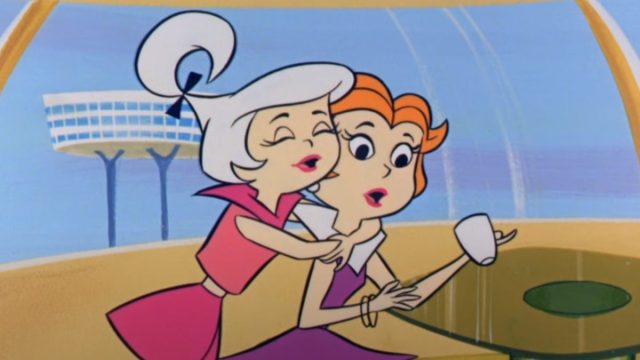
Society’s attitudes toward racism and sexism are ever-changing, but even knowing that, it can be surprising to look at the pop culture of yesteryear and discover just what used to pass muster as acceptable entertainment. Even cartoons—ostensibly innocent entertainment for children—were not immune, often depicting attitudes of the day that look decidedly retrograde in retrospect.
Read on for seven classic animated shows that should have been offensive when they originally aired and are definitely offensive today.
RELATED: 6 ’80s TV Shows That Would Never Be Made Today.
1
Mister Magoo
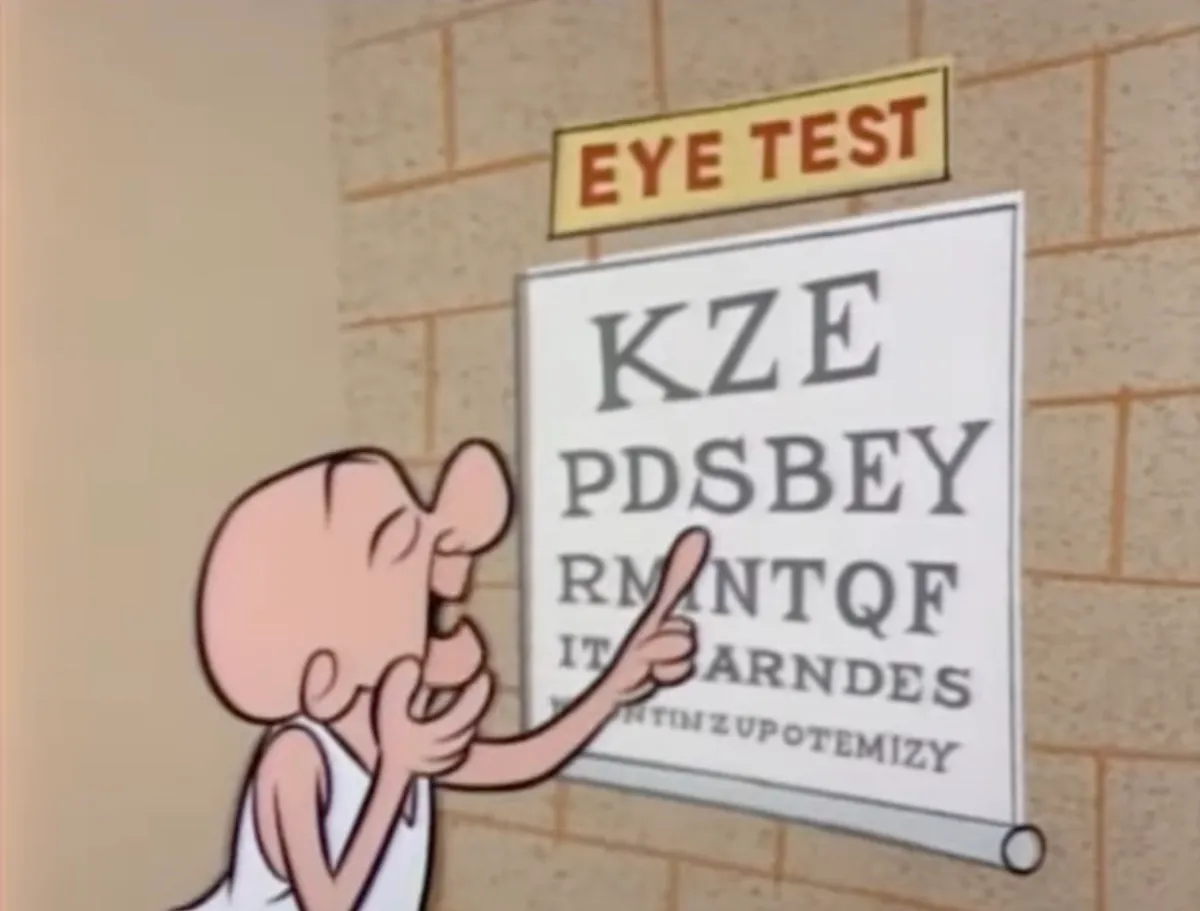
The elderly, glasses-wearing character Mr. Magoo debuted in theatrical shorts starting in 1949; had his own three-season show, Mister Magoo, which began airing in 1960; was revived in the ‘90s for a live-action film starring Leslie Nielsen; and even popped up again in 2011, recast as a kung-fu master.
It’s a surprisingly long tenure for a one-note joke: Mr. Magoo can barely see, and his low vision gets him into all sorts of scrapes, but he remains unwilling to admit his problem. Some modern audiences, including members of the National Federation of the Blind, have pointed out that the baseline premise of the character is ableist, turning the character’s disability into a gag.
Additionally, there’s the overtly racist “houseboy” character added to the ’60s TV series. “Cholly” (Charlie), who was drawn with narrow eyes and oversized teeth and spoke in pidgin English, is every bit a Chinese caricature.
2
Tom and Jerry
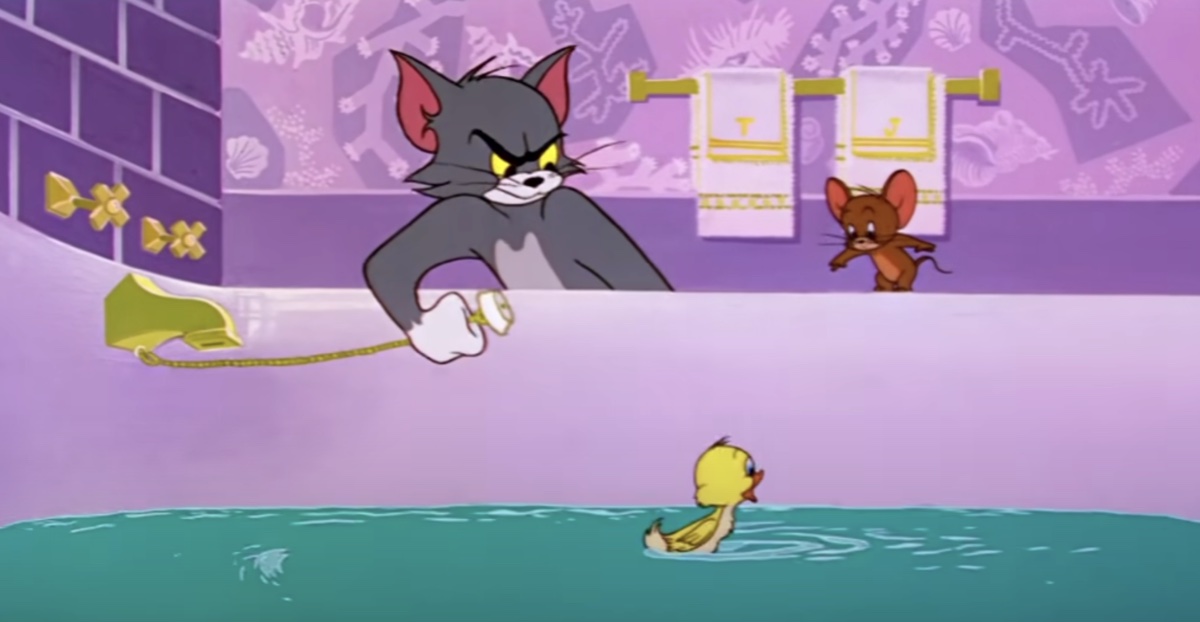
Everyone remembers Tom and Jerry as the series of cartoon shorts (which began in 1940) about a cat who never manages to catch the mouse he’s chasing, violently injuring himself instead. And while the cartoonish mayhem did inspire a parody in the form of the ultra-violent Itchy and Scratchy, the cartoon-within-a-cartoon on The Simpsons, that’s not really why it’s offensive today.
Many of the animated short films include examples of racial stereotyping in the character of Tom’s owner, Mammy Two Shoes, a blatant example of the “mammy” stereotype. (The depiction was offensive enough that her scenes were ultimately reanimated to replace her with a white woman—a solution that is arguably also racist.) Other controversial elements were also censored from some television airings, including instances in which explosive mishaps would cause Tom and/or Jerry to become covered in soot—akin to putting them in blackface.
RELATED: 6 Classic Sitcom Episodes That Are Wildly Offensive by Today’s Standards.
3
Looney Tunes
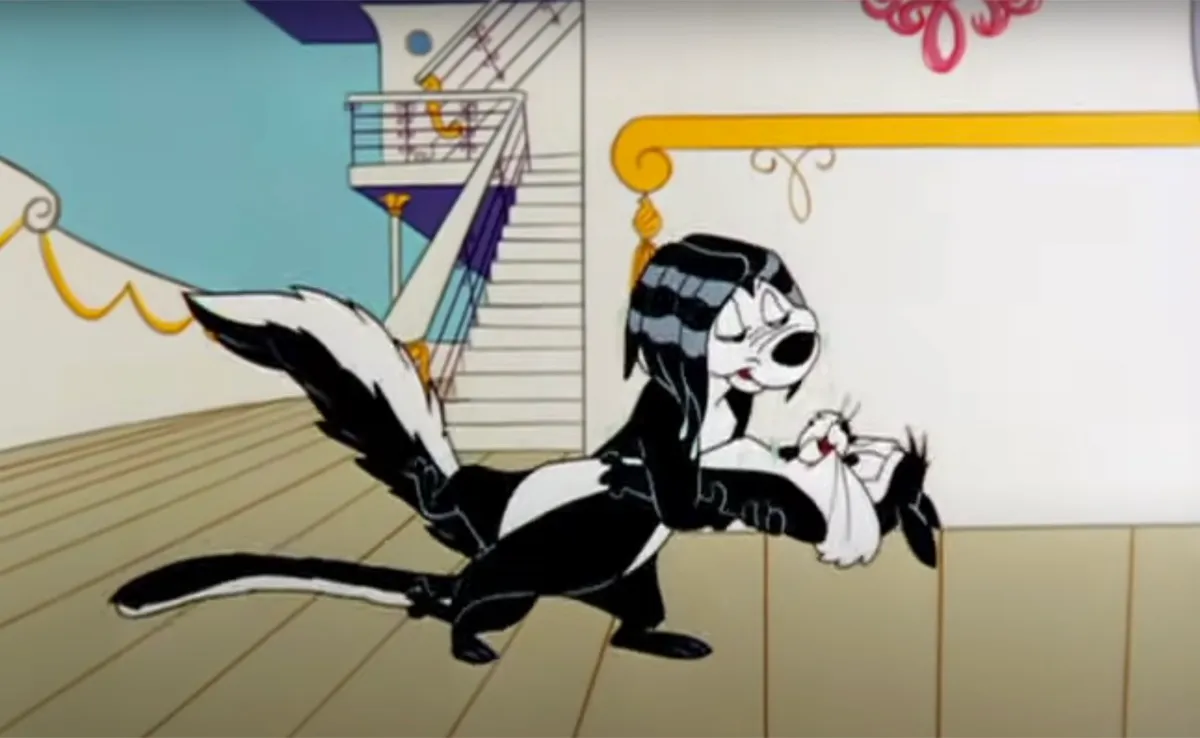
Technically Looney Tunes also wasn’t a single show, but a collection of short films (the first premiered in 1930), many of which originally played in theaters before being packaged together for series including The Bugs Bunny Show and Merrie Melodies, which aired on TV from the ’60s through the year 2000.
However you slice them up, though, there’s plenty there for modern audiences to take offense at, from the downright racist caricatures of Black people in the oldest shorts, to characters who were little more than ethnic stereotypes (though when Cartoon Network got the rights to air Looney Tunes in the late ‘90s, it chose to keep Speedy Gonzales off the air). Even amorous French skunk Pepé Le Pew has been hit with charges of promoting rape culture.
4
The Jetsons
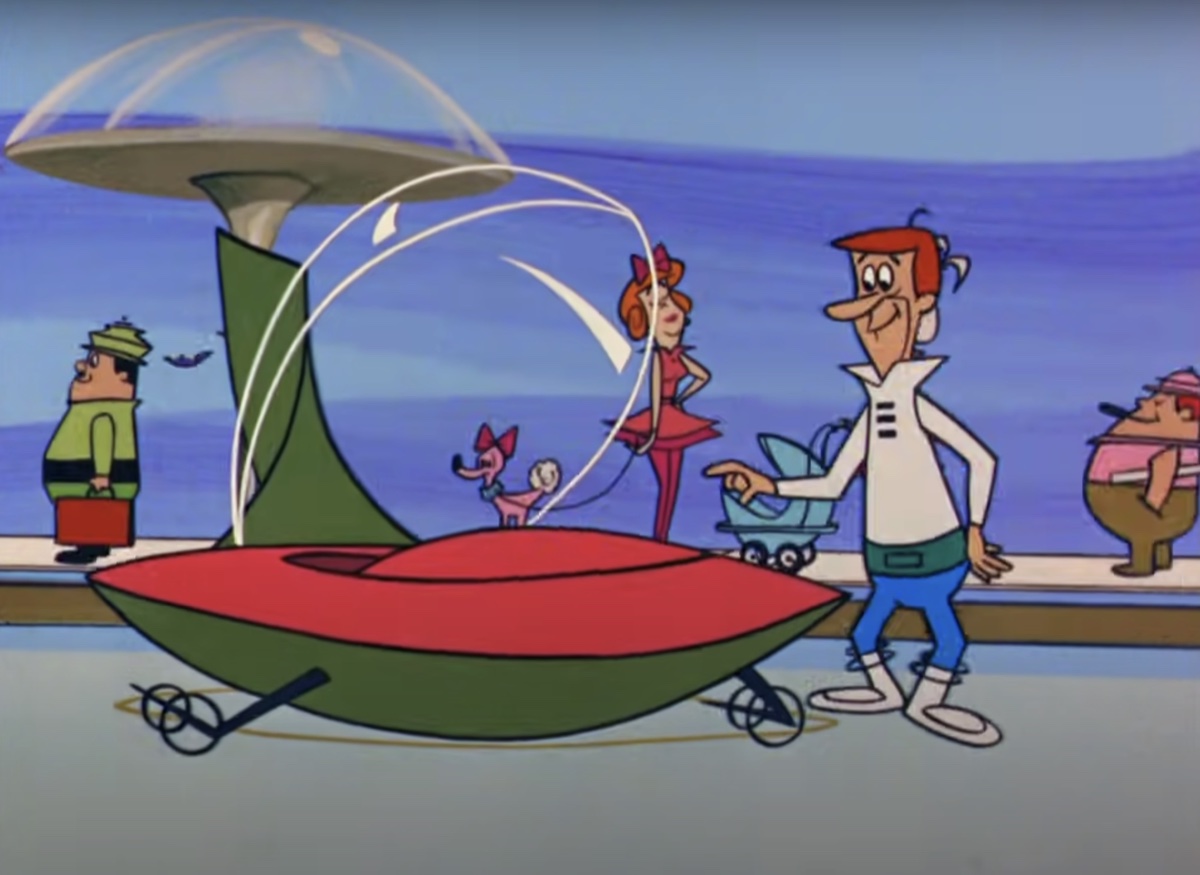
The Jetsons is a family sitcom chronicling the space-age antics of the titular family: patriarch George, his wife Jane, their children Judy and Elroy, dog Astro, and robot maid Rosie. Filled with flying cars, automated everything, and cities built high up in the clouds, it’s an idyllic vision of the future as seen from the ’60s (though the show debuted in 1962, the majority of the episodes were produced in the 1980s after it went into syndication).
But one thing this future lacks? People of color. Everyone in the Jetsons’ version of the future is white. Call it racism by omission if you will, but the blinding whiteness of the show led The Verge to question in 2017 if it depicts a post-apocalyptic dystopia in which all non-white cultures have died off.
For more TV trivia sent right to your inbox, sign up for our daily newsletter.
5
The Flintstones
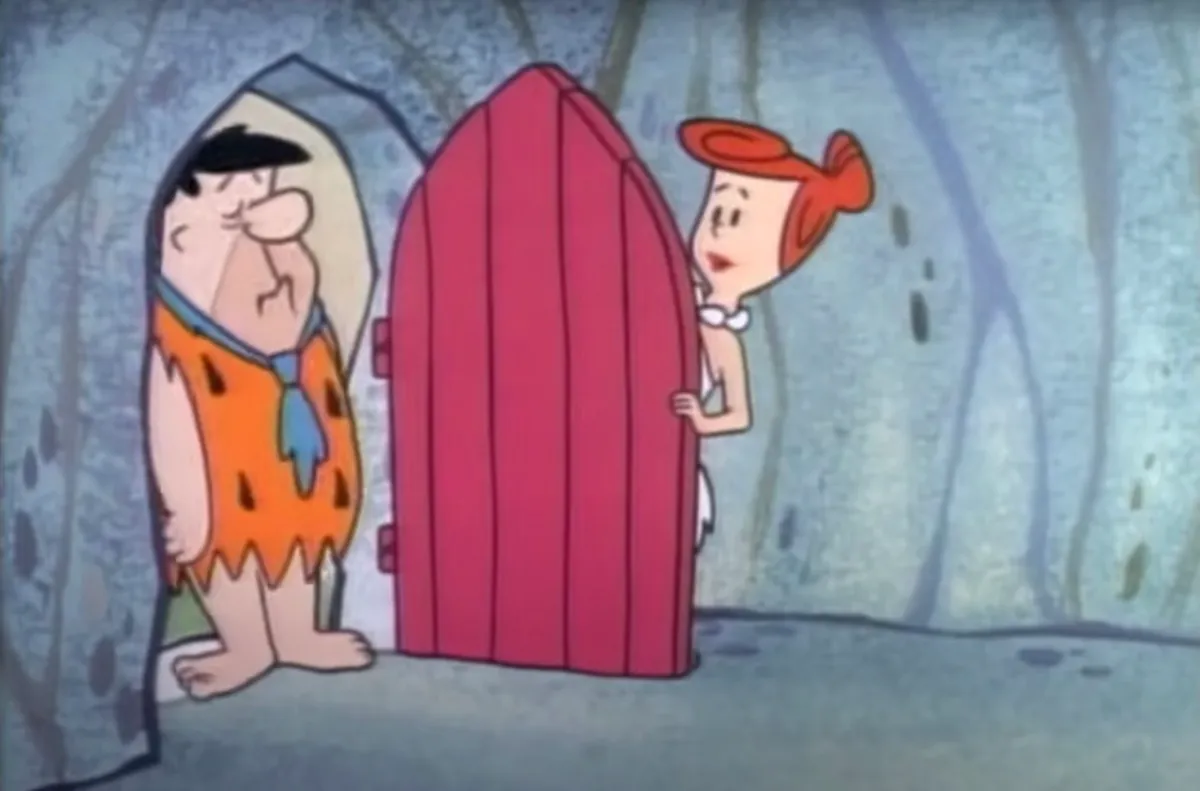
An attempt to send the sitcom The Honeymooners into the Stone Age, The Flintstones, which ran originally from 1960 to 1966, unfortunately brought the sexism and misogyny of that ’50s live-action series back with it. Fred Flintstone is a animal skin-clad variation on Ralph Kramden (Jackie Gleason), who was always threatening to punch his wife so hard she’d fly to the moon; though portrayed as a bit buffoonish, he and his friend Barney are doing their part to reinforce gender roles, specifically the notion that their wives, Wilma and Betty, are there to serve their needs.
This was never more explicitly depicted than in the episode “The Happy Household,” in which Wilma becomes a big TV star and neglects her homemaking duties, prompting Fred to sabotage her career. The episode ends with him gloating as she serves him a massive dinner. Fred gets the last line, directed to the viewing audience: “I hope all you wives out there are taking notes.”
6
The Transformers

Lest you think cartoons left racism behind by the more progressive ’80s, think again. Though not as prone to peppering episodes with blatant ethnic caricatures as shows from earlier decades, the 1984 to 1987 toy-themed series The Transformers still found room to fit in some cultural insensitivity around all the robot battles.
In the wake of historical events such as Iran Contra, the series had a habit of casting Middle Eastern people as villains. The episode “Aerial Assault” features a baddie named Ali who overthrows the ruler of Iran and promises to give oil to the Decepticons in exchange for a fleet of killer drones. Much worse, the episode “Thief in the Night,” which features an Arab ruler named Abdul Fakkadi from the country of “Cambombya,” was so offensive, even at the time, that it led Lebanese American voice actor Casey Kasem to quit the show.
RELATED: 7 Classic Commercials Offensive by Today’s Standards.
7
Paw Paws
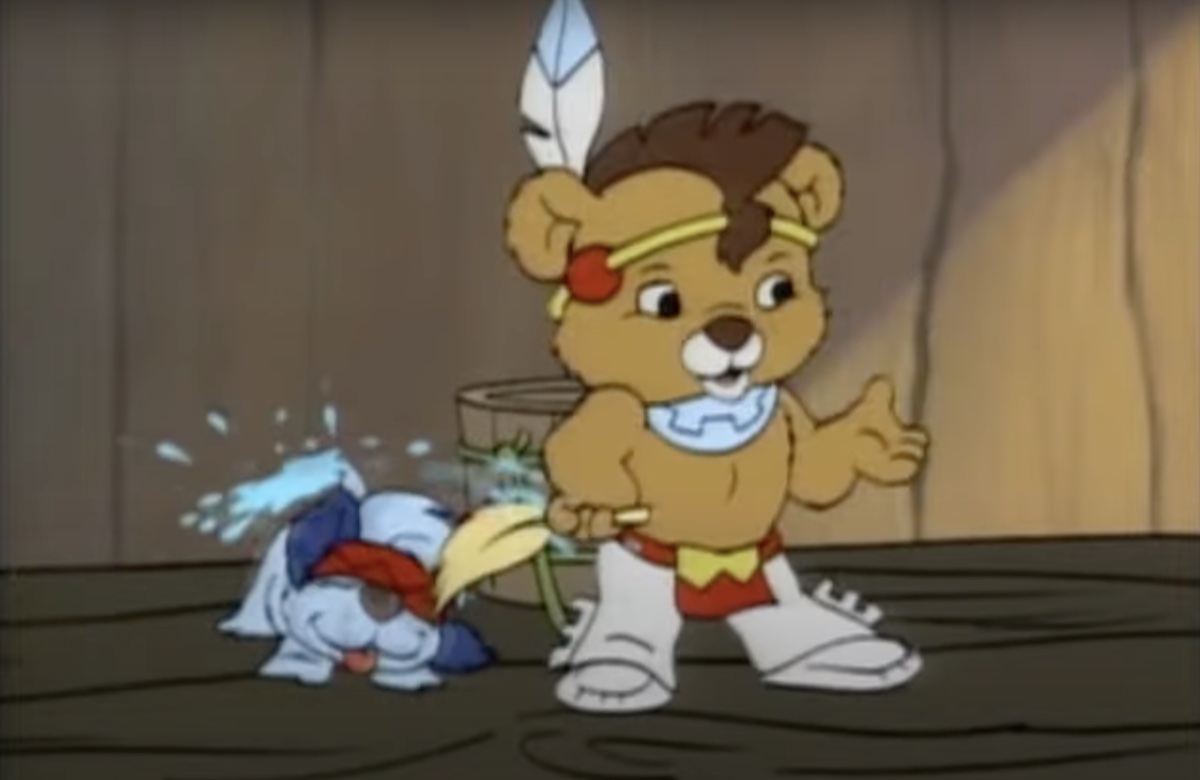
Here’s an example of a show that was perhaps created with good intentions but wound up indulging in tired stereotypes. First airing in 1985, Paw Paws follows a community of cuddly “Native American” bears (the show’s title is a reference to the pawpaw fruit, which was cultivated by Indigenous Americans). The peaceful Paw Paws are constantly defending themselves against their rivals the Meanos, who are trying to steal their three sacred animal totems, which can also come to life. While a show inspired by Indigenous cultures like a step forward in theory, Paw Paws was lazy in its depictions, trucking in stereotypical character design and generic Native spirituality, prompting BuzzFeed to lump it in with other cartoons better left forgotten.